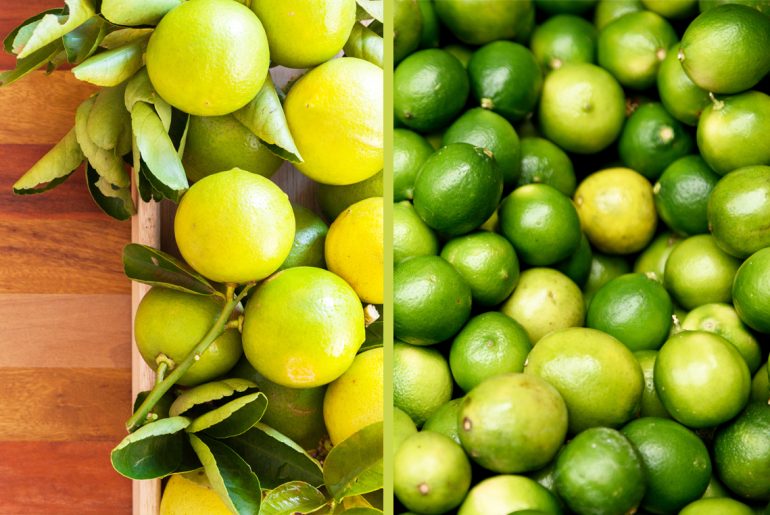It’s August and the celebration of summer foods continues, as we gorge on watermelon, all things caprese, and grilled goods every night. One more summer speciality we just can’t get enough of? Key Lime Pie.
Of course, if you’ve ever made or eaten this tart and tasty pie, you might have asked yourself: What the heck is the difference between a regular, old lime and this fancy fruit called a “Key lime?” Perhaps you’ve even gone to the grocery store, and wondered if you could substitute one for the other — particularly if your store doesn’t stock the teeny speciality Key limes.
So what’s the difference between the two?
Well, not really that much.
The truth is that “regular” limes and Key limes can be used interchangeably in recipes without risking too much of a disaster. Though, without using Key limes, your Key lime pie is arguably just a “Lime pie.”
But let’s dig deeper.
Different types of limes
What we refer to as “regular” limes are more specifically known as Persian limes or Tahitian limes. Despite what your grocery shopping experience may lead you to believe, if you’re living in the United States, Persian limes are actually much less common worldwide than Key limes.
Key limes are also known as Mexican limes or West Indian limes. Compared to Persian limes, Key limes are much smaller — typically about the sized of a ping-pong ball. Key limes are also thin-skinned and nearly spherical in shape. Green Key limes are immature fruits offering juice with higher acidity. As they ripen to a yellow hue, the juice loses its acidity and takes on a sweeter flavor. It’s the tart, yet sweet taste of a uniquely aromatic yellow Key lime that gives the Key lime pie it’s distinctive flavor.
There are other types of limes. The makrut lime (easily identifiable thanks to its bumpy skin) is commonly available at Asian grocery stores and are most often used to flavor and fragrance Thai dishes. The makrut isn’t very juicy, but the zest is used in soups, sauces, and curries.
There are lots of other varieties that go by the name “lime” but can’t claim to be of the citrus family, meaning they’re not really limes at all. There are also a good number of hybrid varieties. Most of these aren’t easily found within the U.S.
History of the Key lime
What we know now as the Key lime arrived in North African and the Near East via Arabian traders. It is said they then travelled to Palestine and the Mediterranean via the Crusaders, then on to Hispaniola — now known as Haiti — via Columbus. Spanish settlers eventually carried them on to Florida.
The fruit flourished in southern Florida, and picked up the “Key” lime moniker we still use today in the United States. In the late 1920s, a hurricane wiped out the Key lime groves, and farmers decided to replace them with the larger, seedless Persian limes, contributing to their ubiquity today. Most key limes today actually come from Mexico or Southern California.
can you substitute persian for key limes?
Yes! Despite their differences, they can easily substitute for each other, though if you’re making a Key Lime pie, Key limes are truly worth seeking out. None-the-less, Key limes aren’t common at most grocery stores in the United States, so if you have to substitute with regular limes, you can. Just remember that while Key limes are juicier for their size, Persian limes are larger and will give you more juice over all. That means you’ll have to adjust your recipe to reflect “ounces of juice needed” rather than “number of limes needed.”
Also try, Lovely lime squares recipe.




